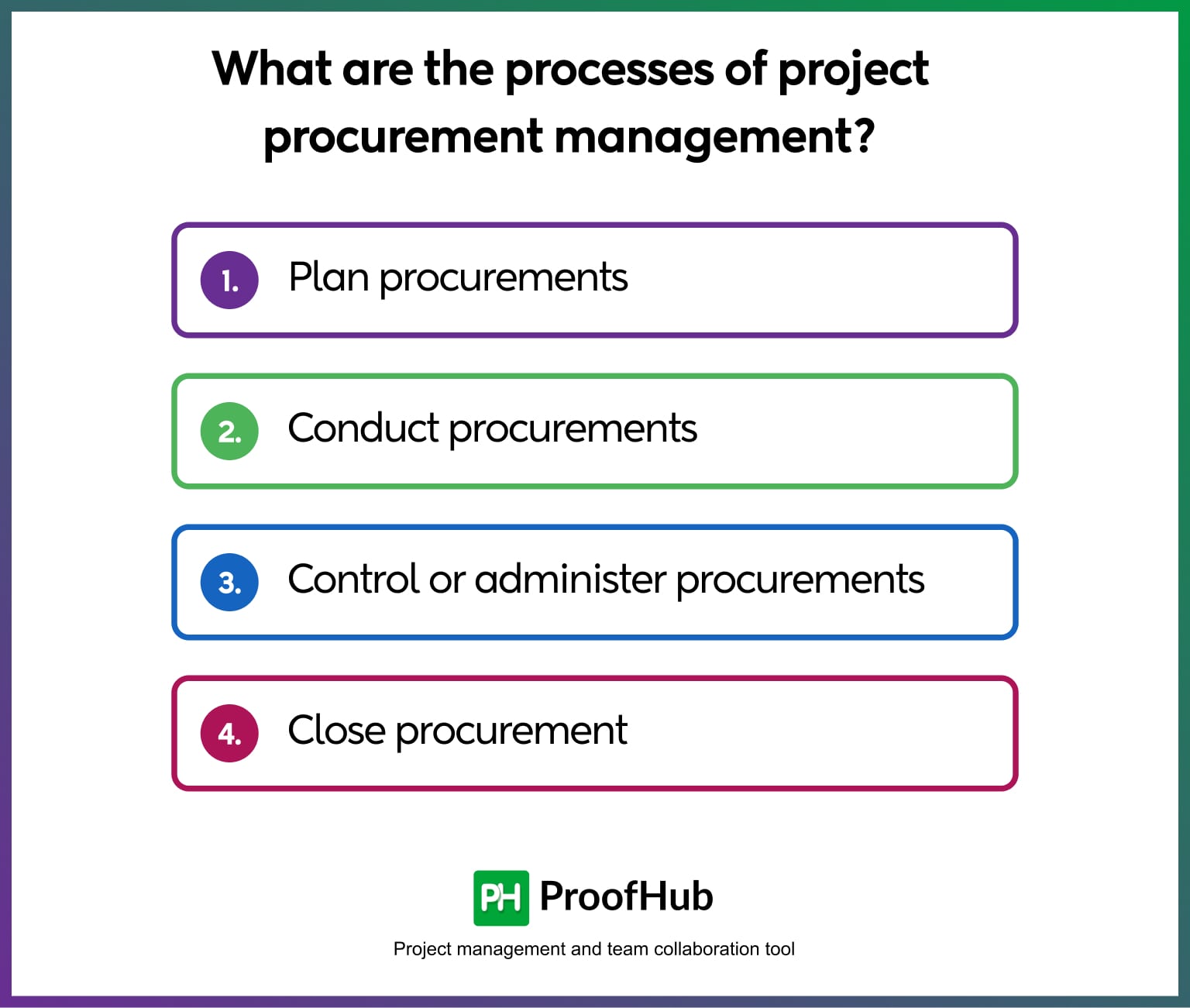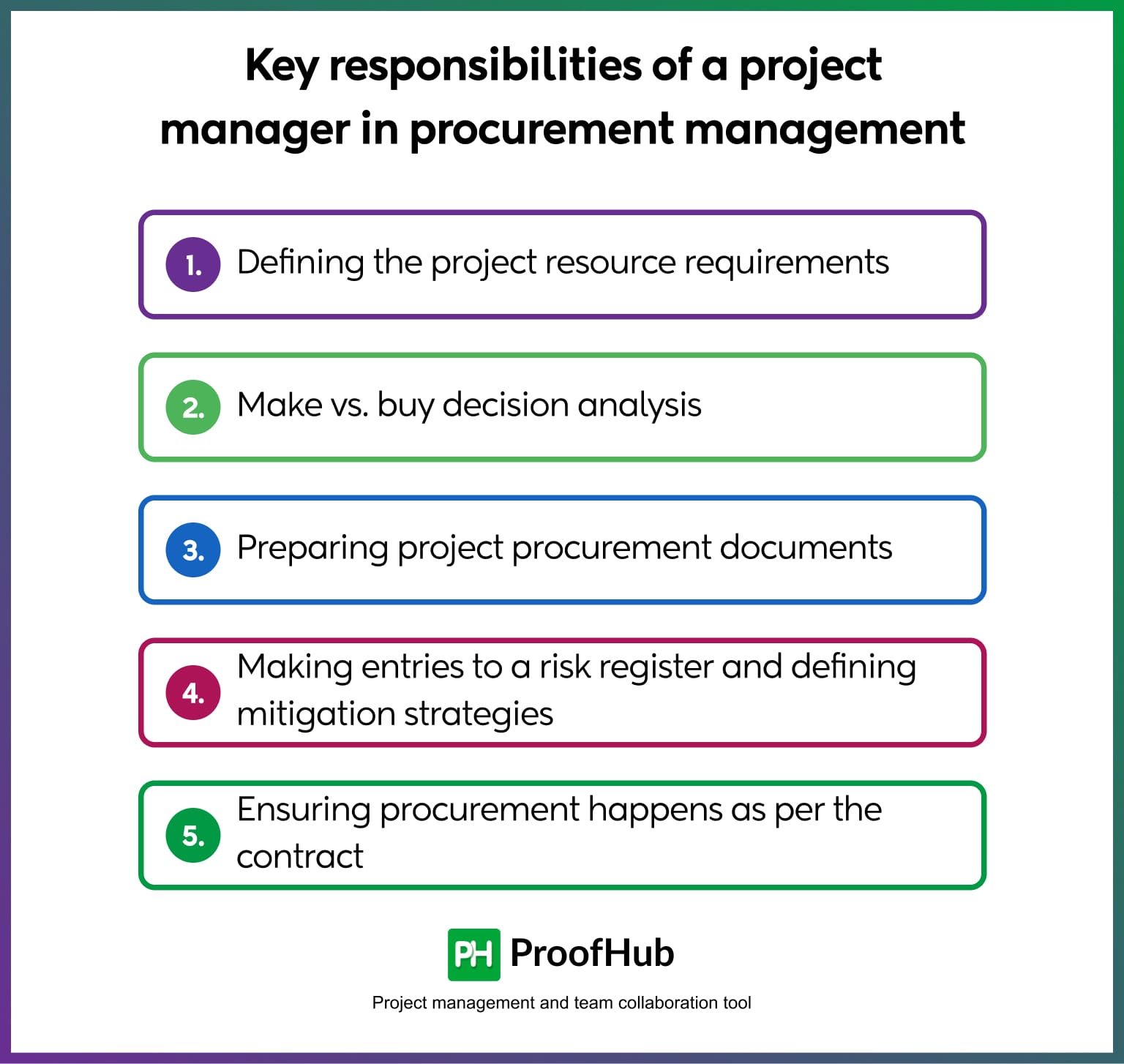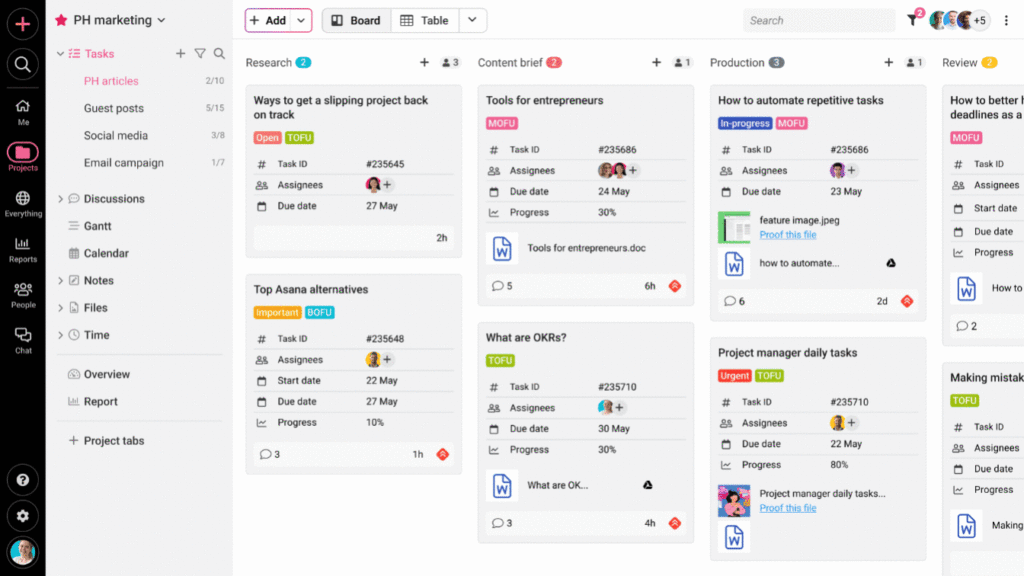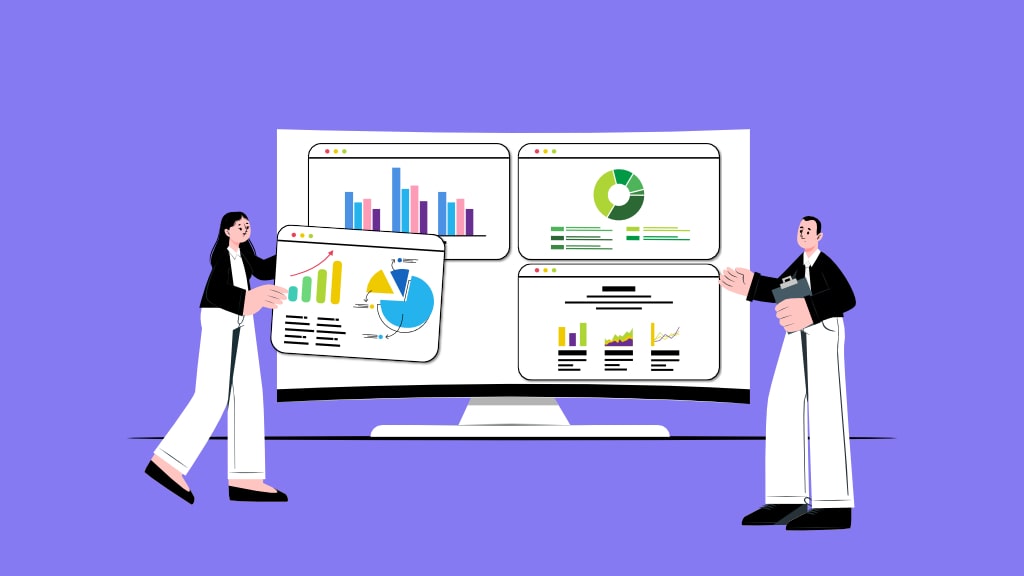Most projects need resources that can only be obtained from external sources. These resources have a direct impact on the cost and schedule of the project. Project procurement management is the process of carefully creating a plan to procure and manage the procurement of those resources.
It ensures the project team receives the resources on time, the procurement team secures the contracts at favorable prices, and the project manager is able to manage the change management process effectively.
In this post, we will learn about the concept of project procurement management so that you can effectively manage the procurement process for your company.
What is procurement in project management?
Procurement is the process of obtaining products and services from sources outside the organization. In the context of project management, procurement refers to the process of acquiring resources for a project team to work on a project. Resources can be related to technology, infrastructure, humans, and goods and are obtained from outside sources.
Procurement management in project management includes the processes that make sure project procurement is conducted successfully. A project manager creates a project procurement management plan that outlines the key processes, project procurement approach, roles, responsibilities, and guidelines to be followed for all procurements on the project.
Importance of project procurement management
External spending constitutes 50 to 80 percent of a company’s cost base. Procurement can surpass mere order fulfillment and instead provide a more durable competitive advantage, strategically securing critical and scarce materials while maintaining supply chain flexibility. – McKinsey & Company
Project procurement management plays a crucial role in the success of a project. It is one of the 10 project management knowledge areas (PMBOK) that also cover contract management of vendors and suppliers. Thus, it becomes important for a manager to learn about procurement in project management.
Here are the key points that stress the importance of project procurement management for a project:
- Ensure the project team receives resources on time
- Help you manage risks related to procurement
- Create a formal process for change management
- Manage the legal aspects of procurement
- Help you secure favorable deals for the business
What are the processes of project procurement management?
Project procurement management is a well-defined, four-step process. Learning about these strategic management processes helps you understand the basic framework of it.
Here is a brief explanation of project procurement management processes:

1. Plan procurements
Plan procurement is the first process of project procurement management which is concerned with creating a project procurement plan. It starts with defining the project resources your project team needs.
A project manager sits with the project team to find out the resource requirements for the project. It occurs during the planning stage. Having a work breakdown structure (WBS) of the project by your side helps you easily identify and quantify your project procurement needs.
Plan procurement includes the key step of the project procurement, that is, deciding whether you should build in-house or opt for outsourcing the project resource requirements to external sources. Factors like cost, speed of the delivery, and quality are kept in mind while deciding between make vs. buy.
After meeting with key stakeholders, you create the list of the project resources you need to outsource from outside. At this point, you define what to acquire, how to acquire it, how much is needed, and when.
You create a detailed plan for the project procurement management. It includes:
- Defining the approach to procurement
- Conditions for accepting vendors
- Contract types to use for procurement (Cost Plus Fixed Fee (CPFF), Cost Plus Incentive Fee (CPIF), and Cost PlusAward Fee(CPAF)
- Creating various key procurement documents Request For Proposal (RFP), Statement Of Work (SOW), and Change Request Forms
- Adding risks to the register
- Guidelines to avoid discrimination in vendor selection and more.
There are a set of tools and techniques you can use in planning procurements such as make vs. buy decisions, expert judgment, life-cycle assessment, categorizing the resources based on importance, and risk register.
2. Conduct procurements
Conduct procurements as the name suggests is the process of conducting what you have planned in the first stage. It is the execution of the procurement that includes sending RFP forms to gather the bids from vendors or sellers, comparing and evaluating the sellers, and finally selecting the sellers. The actual price negotiations happen at this stage, contracts are signed, and payments are made to the sellers for products or services.
Sellers are shortlisted and selected based on vendor acceptance criteria that include information like the seller’s required capabilities, technical expertise, capacity, delivery dates, product cost, and life-cycle cost.
Selection is based on the scoring system that includes assigning the weighted evaluation score to each proposal. Based on the score, a list is prepared which lays the foundation for the decision-making
To negotiate the price for a contract, you can either prepare your own independent estimate or have an estimate of costs prepared by an outside professional estimator. This serves as a benchmark to choose and negotiate on proposed responses.
3. Control or administer procurements
Control or administer procurements is a phase where you keep an eye on the procurement to ensure everything is proceeding as planned. In this stage, you monitor and manage the procurement relationship with sellers as defined by the project procurement plan and officially signed documents by both parties.
There are three things you need to administer in this stage:
- Ensuring the seller is functioning as per the procurement requirements
- Ensuring the buyer is proceeding according to the terms of the legal contract
- Performing quality checks on products or services delivered
The purpose of this stage is to ensure that both parties meet their contractual obligations.
If something goes off the track, you need to take corrective measures to keep procurement on track.
It is the most dynamic stage of project procurement management where risks happen. Any changes in the schedule of procurement parts can impact the overall project schedule and budget.
This stage also has its own set of tools and techniques to facilitate operations. Top techniques include Contract Change Control System, Procurement Performance Reviews, Inspections and Audits, Performance Reporting, and Claims Administration.
4. Close procurement
This is the last step where you close the project procurement process. The buyer verifies that all work and deliverables were completed and acceptable. The contract already mentions the terms and conditions of what it means to be completed, which helps you prevent conflicts with sellers. Any outstanding liabilities should be released at this point.
Many companies also use this process to reflect final results and archive such information for future use. Thus, you need a digital record system to manage contract and procurement documentation and records.
The fourth process of project procurement management is removed from the sixth edition of the Project Management Book of Knowledge (PMBOK) Guide. If you want to learn more about it in detail, you can refer to the prior editions of the PMBOK Guide.
The role of the project manager in project procurement management
A project manager plays a key role in ensuring the success of the project procurement. It is because a manager has the most precise idea of the resources a project team needs for the project when resources are required, what resources the company can make in-house, and the ones that need to be purchased from the outside.
However, a project manager does not have complete authority to make project procurement-related decisions solely like other areas of the project management.
A project manager needs to work with a legal team to manage the contracts with sellers. Thus, project procurement and contract management go hand in hand. If you do not manage the contracts appropriately, later it can lead to disputes, conflicts, and litigation, which you do not want to face at all as a manager.
Also, in large organizations, you will often find dedicated procurement departments and teams and established channels for procurement. Thus, a project manager needs to work in coordination with the procurement manager or procurement team. However, in small businesses, a project manager may have the complete authority to make decisions, negotiate contracts, and administer procurement.
Regardless of that, a project manager’s input is the most crucial in project procurement management. A manager plays a key role in every stage of the project procurement, right from planning to execution and administration.
Here is the list of key responsibilities of a project manager in project procurement management:
- Identifying and defining the project resource requirements
- Performing make vs. buy decision
- Preparing the key project procurement documents such as statement of work, vendor selection criteria, and project procurement plan
- Making entries to a risk register and defining mitigation strategies
- Ensuring procurement is happening as per the agreed schedule and contract

Read more: 14 Key project manager roles and responsibilities
Best practices for project procurement management
There are certain practices a project manager can follow to facilitate project procurement in project management easily and effectively. Have a look at them.
1. Document everything in the project procurement plan
Clearly define how you are going to manage the procurement activities, roles and responsibilities of each individual, evaluation criteria for selecting suppliers and awarding contracts, and guidelines to be followed for all procurements on the project. The purpose is to ensure everyone in the procurement team clearly understands how things need to happen.
2. Integrating project procurement with other project management processes
The best way to conduct project procurement effectively is to integrate it with other project management factors such as scope, schedule, and cost. This will give you a clear idea of what, when, and how much you need and what will be the impact if something goes wrong.
3. Using technology to streamline and manage procurement
Procurement is not a project management knowledge area that you should manage in your mind. You need procurement management software to store all the procurement documents, facilitate collaboration among members of the procurement team, and monitor the project procurement.
You can choose a standalone procurement management software or a project management software with support to procurement management, such as ProofHub, to streamline and execute procurement operations effectively.
As per the Verified Market Research, the entire procurement software market size is to be valued at $9.5 billion by 2028 with a CAGR of 7.6%.
Read more: How to choose a project management software: A complete guide
How ProofHub can help you with project procurement management?
ProofHub is an all-in-one project management and team collaboration software that can help you manage the project procurement by integrating it with other aspects of the project. It allows you to create a project plan with a Gantt chart, break a project into tasks, create a workflow, and define the resource requirements based on the WBS of a project.
The best thing about ProofHub is its customization. You can create a dedicated project to manage the procurement alongside the project. This allows you to share the resource requirements effectively with the procurement team.
You can collaborate with the team directly on the tasks, attach files under the procurement project, conduct project-level discussions, and chat 1:1 with any team member in real-time. This allows you to work efficiently with the procurement team and brings transparency to your procurement process.

With in-built project reporting, you can also administer or control project procurement with ProofHub.
You can have a trial run of ProofHub for free to see how it helps you manage project procurement management integrated right into the project.
Conclusion
Project procurement management has a direct impact on the success of the project. It can determine the cost of the project, impact the schedule of the project, and decide the fate of the project. Therefore, it becomes very important for a project manager to master the concepts of project procurement to ensure the smooth running of procurement operations in the organization.
Effective project procurement management ensures the project team has all the resources available on time to work on the project, the procurement team secures the most profitable deal for the organization, and the organization is protected from legal implications of the procurement.
FAQs
What component of the project management plan is essential for procurement management?
Scope is one of the most essential components of the project management plan that is essential for procurement management. It is because without the scope you cannot identify the resources you need to work on the project. That’s why the work breakdown structure (WBS) is considered as the most important document for procurement management.
What are the key documents involved in project procurement management?
The key documents include Request for proposal (RFP), Statement of work (SOW), Vendor acceptance criteria, Change management form, Purchase orders, Contracts, and Offers. These are essential for project procurement.
How does risk management impact procurement decisions?
Risk management is an integral part of procurement management in project management because, without the right resources, even the best people fail at work. Every project manager must plan for risks associated with procurement and think out the mitigation strategies to counter those risks. This is because any change in the supply of resources can impact the project budget and timeline.
What is the make vs buy decision in project procurement management?
Make vs. buy decision in project procurement management is the decision where a project manager decides on whether to build a product in-house (make) or outsource to the external source (buy). It includes the cost-benefit analysis of both options. Factors like speed of delivery, cost to benefits, and risks are considered while making the final choice.

